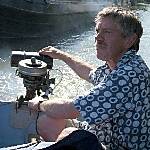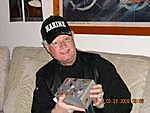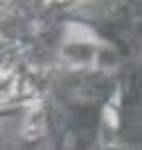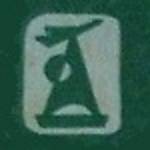You are viewing the archived version of the site.
Go to modelshipwrights.com for the current dynamic site!
Go to modelshipwrights.com for the current dynamic site!
1⁄350USS Lexington (CV2) 1927-1942
23
Comments
"New MSW Crew-mate Chris Smithers (smithec) shares a fantastic full build story of his 1/350 scale, USS Lexington (CV2), in his first MSW Submission!"

USS Lexington (CV2) 1927-1942
Modelled as in April 1942 following final refit and preparing to depart from Pearl Harbour en-route to The Battle of the Coral Sea, where the ship was lost.
Material List/Approximate cost £ sterling
Kit- 80
Nautilus laser-cut wooden flight deck- 40
Floating Drydock Co. plans- 20
Gold Medal Models (GMM) PE set- 20
L’Arsenal 5-inch mounts- 20
L’Arsenal 5-inch turned brass barrels- 13
WEM Colourcoat paint- 14
Trumpeter Douglas TBD-1 x 10- 9
Trumpeter Douglas SBD-3 x 10- 9
WEM 1.1-inch quad PE sets- 8
L’Arsenal crew figures- 35
Voyager USN life rafts- 7
BECC cotton flags- 20
Custom built glass case- 59
Mirror for rear of glass case- 14
Aluminium edging- 6
Name plate- 11
Grande Total- 385
Build Progression, (as listed in article)
Stage 1: hull (part 1)
Stage 2: boat pockets
Stage 3: gallery deck
Stage 4: forward 5-inch sponsons
Stage 5: forward light AA sponsons
Stage 6: light AA sponsons in boat pocket positions
Stage 7: lower bridge structure
Stage 8: upper bridge structure
Stage 9: 8-inch fire control platform
Stage 10: foretop 5-inch fire control platform
Stage 11: stack structure
Stage 12: radar cabin
Stage 13: water tank
Stage 14: stack cowling
Stage 15: lower stack platform
Stage 16: upper stack platform
Stage 17: 5-inch fire control
Stage 18: flight deck and hull assembly
Stage 19: hull (part 2) and dry run
Stage 20: painting and tinkering time
Stage 21: weapons
Stage 22: major components sub-assembly
Stage 23: bridge detailing
Stage 24: stack assembly detailing
Stage 25: major components assembly
Stage 26: foretop
Stage 27: flight deck light AA positions
Stage 28: overall detailing
Stage 29: boats and rafts
Stage 30: boat handling davits
Stage 31: rigging and stores handling (part 1)
Stage 32: paint finishing
Stage 33: rigging and stores handling (part 2)
Stage 34: side ladders
Stage 35: boat booms
Stage 36: final adjustment
Stage 37: air group
Stage 38: crew
Stage 39: stores
Stage 40: flags and signals
The Lexington Class Carriers, Robert C Stern, Arms & Armour Press, is surely the definitive book on the Lexington class. Not only does it contain a superb range of detailed, on-board photos, but the text is comprehensive to a fault, enabling many detail design and modification issues to be resolved in the absence of photographic evidence. A ‘must have’ if you can find it.
Classic Warships Publishing, Warship Pictorial #11, Lexington Class Carriers, was also invaluable. It contains the most complete selection of photos of the ship throughout her career - and particularly immediately prior to the Battle of the Coral Sea - of any publication available.
Warships Illustrated No.10, The US Navy in World War Two, 1941-1942, by Robert C Stern, contains the most complete set of images of the Lexington at the Battle of the Coral Sea obtainable in a single volume.
Squadron/signal publications, Warship #5, US Aircraft Carriers in action Part 1. Nothing in it specific to the Lexington that isn’t in the Classic Warships publication, but contains useful close-up photos of generic details on other carriers of the period, particularly armament.
Naval Weapons of World War Two, John Campbell, Conway Maritime Press, gives in-depth details with drawings of armament, fore-control directors and radars for this class.
Aircraft carriers of the US Navy, Stefan Terzibaschitsch, Conway Maritime Press. Limited coverage of the Lexington class, some inaccuracies in the text, and profiles and a plan which are misleading and ficticious.
Osprey Publishing, Elite, The US Navy in World War II, for detailed information on uniforms and working dress.
Osprey Publishing, New Vanguard, US Navy Aircraft Carriers 1922-45, is not worth having for this particular subject (nor, in my opinion, any other for that matter).
Review

USS Lexington (CV2) 1927-1942
Modelled as in April 1942 following final refit and preparing to depart from Pearl Harbour en-route to The Battle of the Coral Sea, where the ship was lost.
build details
Base Kit-CV2 Lexington, Trumpeter Models, 1:350 ScaleMaterial List/Approximate cost £ sterling
Kit- 80
Nautilus laser-cut wooden flight deck- 40
Floating Drydock Co. plans- 20
Gold Medal Models (GMM) PE set- 20
L’Arsenal 5-inch mounts- 20
L’Arsenal 5-inch turned brass barrels- 13
WEM Colourcoat paint- 14
Trumpeter Douglas TBD-1 x 10- 9
Trumpeter Douglas SBD-3 x 10- 9
WEM 1.1-inch quad PE sets- 8
L’Arsenal crew figures- 35
Voyager USN life rafts- 7
BECC cotton flags- 20
Custom built glass case- 59
Mirror for rear of glass case- 14
Aluminium edging- 6
Name plate- 11
Grande Total- 385
Build Progression, (as listed in article)
Stage 1: hull (part 1)
Stage 2: boat pockets
Stage 3: gallery deck
Stage 4: forward 5-inch sponsons
Stage 5: forward light AA sponsons
Stage 6: light AA sponsons in boat pocket positions
Stage 7: lower bridge structure
Stage 8: upper bridge structure
Stage 9: 8-inch fire control platform
Stage 10: foretop 5-inch fire control platform
Stage 11: stack structure
Stage 12: radar cabin
Stage 13: water tank
Stage 14: stack cowling
Stage 15: lower stack platform
Stage 16: upper stack platform
Stage 17: 5-inch fire control
Stage 18: flight deck and hull assembly
Stage 19: hull (part 2) and dry run
Stage 20: painting and tinkering time
Stage 21: weapons
Stage 22: major components sub-assembly
Stage 23: bridge detailing
Stage 24: stack assembly detailing
Stage 25: major components assembly
Stage 26: foretop
Stage 27: flight deck light AA positions
Stage 28: overall detailing
Stage 29: boats and rafts
Stage 30: boat handling davits
Stage 31: rigging and stores handling (part 1)
Stage 32: paint finishing
Stage 33: rigging and stores handling (part 2)
Stage 34: side ladders
Stage 35: boat booms
Stage 36: final adjustment
Stage 37: air group
Stage 38: crew
Stage 39: stores
Stage 40: flags and signals
References
The Floating Drydock Company plans are indispensable. Apart from one internal profile, they are however limited to external profiles and plans of the flight deck and superstructure. There are no plans of the decks below flight deck level, and no cross-sections, so an element of intelligent guesswork, backed up with reference to published photos, was necessary in many areas. The drawings represent the ship as originally completed, so you need to refer constantly to photographs for the later modifications. Be aware that these plans are huge, at 1:100 scale. Working on my bench I couldn’t roll them out full-length, but scrolled through them as necessary. This made it inconvenient to cross-reference detail from one end of the ship to another, and as a result I made a few errors that I had to subsequently correct.The Lexington Class Carriers, Robert C Stern, Arms & Armour Press, is surely the definitive book on the Lexington class. Not only does it contain a superb range of detailed, on-board photos, but the text is comprehensive to a fault, enabling many detail design and modification issues to be resolved in the absence of photographic evidence. A ‘must have’ if you can find it.
Classic Warships Publishing, Warship Pictorial #11, Lexington Class Carriers, was also invaluable. It contains the most complete selection of photos of the ship throughout her career - and particularly immediately prior to the Battle of the Coral Sea - of any publication available.
Warships Illustrated No.10, The US Navy in World War Two, 1941-1942, by Robert C Stern, contains the most complete set of images of the Lexington at the Battle of the Coral Sea obtainable in a single volume.
Squadron/signal publications, Warship #5, US Aircraft Carriers in action Part 1. Nothing in it specific to the Lexington that isn’t in the Classic Warships publication, but contains useful close-up photos of generic details on other carriers of the period, particularly armament.
Naval Weapons of World War Two, John Campbell, Conway Maritime Press, gives in-depth details with drawings of armament, fore-control directors and radars for this class.
Aircraft carriers of the US Navy, Stefan Terzibaschitsch, Conway Maritime Press. Limited coverage of the Lexington class, some inaccuracies in the text, and profiles and a plan which are misleading and ficticious.
Osprey Publishing, Elite, The US Navy in World War II, for detailed information on uniforms and working dress.
Osprey Publishing, New Vanguard, US Navy Aircraft Carriers 1922-45, is not worth having for this particular subject (nor, in my opinion, any other for that matter).
Review
Comments
Hi Joseph,
Yeah, it was a lot of research. I was DETERMINED to make it abolutely as accurate as possible. What I don't understand is how Trumpeter got so much of it grotesquely wrong. Anyway, thanks for your comments. I sure hope you find my feature useful - from what I've seen the 1:700 from Trumpeter is just a scaled down version of the 1:350 kit, including everything that's wrong with the big one!
JUL 08, 2008 - 05:36 AM
Hi Rui
Well, well, well. I used to be a graphic designer myself as well. And a copywriter. Hence what I hope is a deal of professionalism in my SBS guide.
The whole project spanned two years. I didn't dare start another model in all that time, knowing it would simply delay completion and possibly I would lose my motivation. Sometimes it was very hard to keep going - the progress when doing the armament and the air group seemed so slow. I really had to force myself to keep going.
Thanks for the advice on using Clearcoat on the decals. Actually, that is what I did use, in order to soften the decals so they would lay close on the curved fuselage sides, to get them to stick, and to try and dull them down. All the planes were matt varnished as well, but that still didn't kill the decal edge reflection.
You can see some of my 1:700 stuff at: LINK If you select my name from the top of the menu on the left you can see all my galleries.
By the way, the 1:700 Trumpeter Lexington looks like just a scaled-down version of the 1:350 version, including everything that is wrong and inaccurate. So please, please, do use all the research I did to get it right. I look forward to seeing the result!
Regards, Chris
JUL 08, 2008 - 05:48 AM
Jim
Your comments an honour indeed. I have followed your work over the years at Modelwarships.com and you really are the best. Counting the hours is actually a way of giving myelf a sanity check! Which is why to some extent the whole project took me two years from start to finish.
Regards, Chris
JUL 08, 2008 - 05:53 AM
Thanks for taking time to answer to my questions!
I have the 1/700 Trumpeter model, for Coral Sea fit, so I guess you have done all the research for me - but still, I have to get the work myself!
Not for now, but for a "near" future (I am currently working on three projects, one a full scratch all in 1/700).
Thanks for the link, and since my memory is better for graphics, than for names, I can say that I had already seen your Sara / Lex duo in MW.
Please keep up - keep your ship models afloat!
Rui
JUL 08, 2008 - 05:57 AM
Are you sure that thing is a model. It looks so real. In some of those photos it looks too real. Nice job. Amazinglly nice job. Great tribute to those who sailed, fought and died on board the original Lady Lex carrier. Nice work.
JUL 11, 2008 - 08:46 AM
Hi Chris,
Sorry no plans on any new 1/350 items.
You could use my YC-728 or 829 for an open ammunition lighter. I have some photos of their use as such.
JUL 15, 2008 - 07:06 AM
Hello Chris:
I just finished reading your build log. Outstanding work and very well written. I have this kit, not sure I want to tackle all the inaccuracies vice just building an OOB kit, but, your work is inspirational and you presented a lot of neat ideas to enhance the kit. I will be referencing your build log when I tackle mine. Thanks for posting and sharing.
FEB 10, 2015 - 08:49 AM
Mark, I doubt Chris will respond as this is a 7 year old tread and Chris last signed in 7 years ago.
FEB 10, 2015 - 09:13 AM
wow, awesome model building.
well worth resurrecting the thread and feature.
FEB 11, 2015 - 09:17 AM
Copyright ©2021 by Chris Smithers. _OPINIONS Model Shipwrights, KitMaker Network, or Silver Star Enterrpises. Images also by copyright holder unless otherwise noted. Opinions expressed are those of the author(s) and not necessarily those of Model Shipwrights. All rights reserved. Originally published on: 2008-07-04 00:00:00. Unique Reads: 23645














